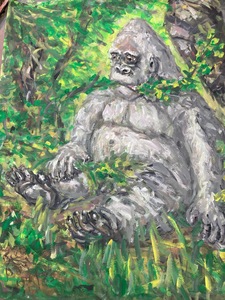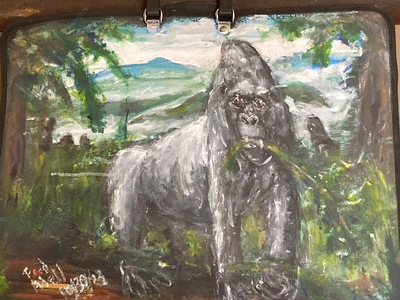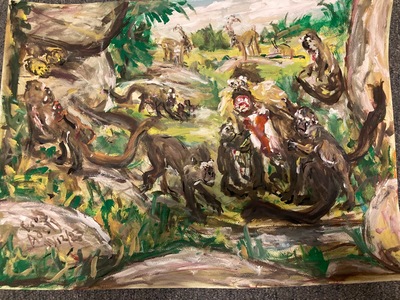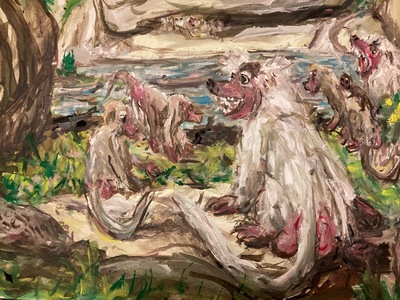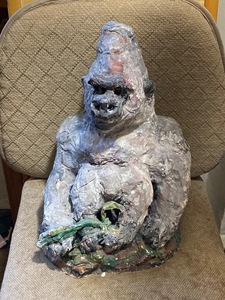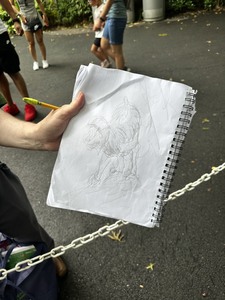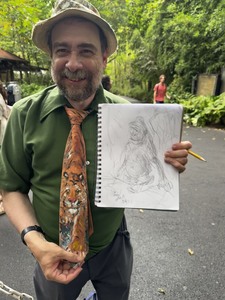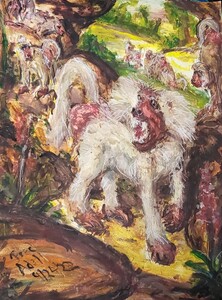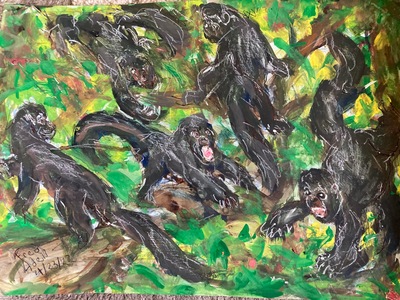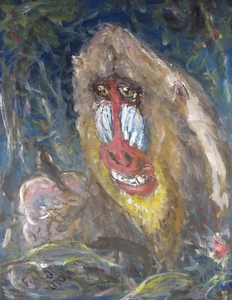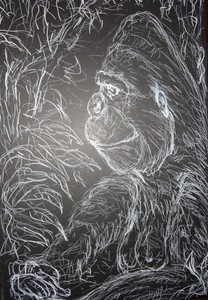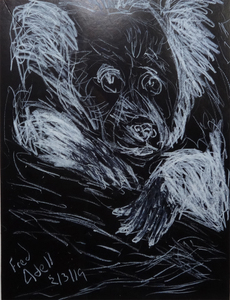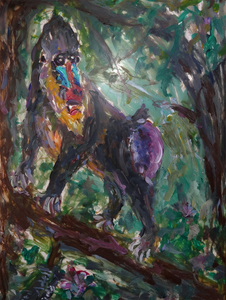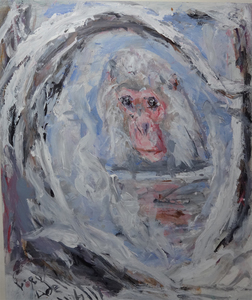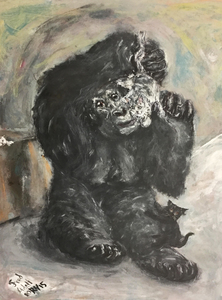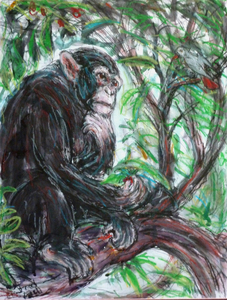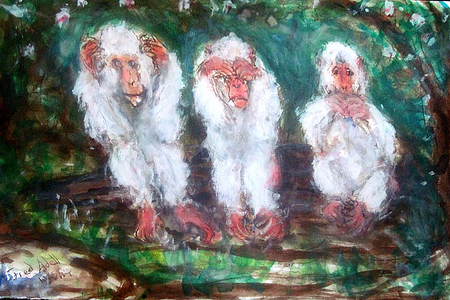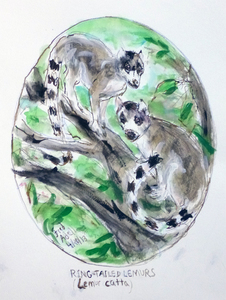Mammals - Primates
"HANUMAN (GREY) LANGURS (Semnopithecus entellus)"
2024
White marker on black illustration board
15" x 20"
2024
White marker on black illustration board
15" x 20"
The Hanuman Langur occurs throughout most of the Indian Subcontinent, and able to inhabit a variety of climates, from the parched deserts of Pakistan to the frigid forests of Nepal's Himalayas, as well as rainforests, villages, and even large cities. Their diet is more varied (than that of other langurs) Their diet, while primarily plant-based, includes insects (and other invertebrates), lizards and (sometimes) mice. Highly revered in Hindu culture, these protected monkeys have free reign in temples and shrines, and have become bold enough to panhandle sweet treats from their human caretakers.
"MAROON LANGURS (Trachypithecus rubicundus)"
2024
Mixed Media (Ink, watercolor, tempera) on watercolor paper
12" x 18"
2024
Mixed Media (Ink, watercolor, tempera) on watercolor paper
12" x 18"
This langur (aka "leaf monkey") species occurs only on the island of Borneo (in Indonesia), inhabiting the canopy layer (50-100 ft. above the ground) of rainforests. Their diet is almost exclusively comprised of leaves. The fur is predominantly dark red in color, the skin (on face, hands & feet) is light blue.
"Verreaux' Sifaka" (Propithecus verreauxii)
2024
Mixed Media (Ink, watercolor, tempera) on watercolor paper
12" x 18"
2024
Mixed Media (Ink, watercolor, tempera) on watercolor paper
12" x 18"
Sifakas are lemuroids, occurring in the arid western part of Madagascar, inhabiting Euphorbia thickets, among stands of baobab trees. Vertical "clingers", Sifakas can also move about in bounding leaps up to 10 feet high and 20 feet across!!
"Sapphire (White Ring-tailed Lemur young)"
2024
Mixed Media (Ink, watercolor, tempera) on watercolor paper
9" x 9"
2024
Mixed Media (Ink, watercolor, tempera) on watercolor paper
9" x 9"
"Sapphire" was a near-albino (retaining some markings) Ring-tailed Lemur (Lemur catta), named for his blue eyes. Unfortunately, he did not live to adulthood, possibly more vulnerable to disease because of its recessive genetic traits
"HAMADRYAS BABOONS" (Papio hamadryas)
2023
Mixed Media (Ink, watercolor, tempera) on watercolor paper
18" x 24"
2023
Mixed Media (Ink, watercolor, tempera) on watercolor paper
18" x 24"
inspired by Hamadryas Baboon exhibit @ the Prospect Park Zoo in Brooklyn, NY The male has a long gray (to white) mane, females have short hair, generally yellowish brown. Unlike other species in the genus Papio, adult Hamadryas baboons have salmon pink skin, especially the enlarged ischial callosities (buttocks) which are quite prominent!










